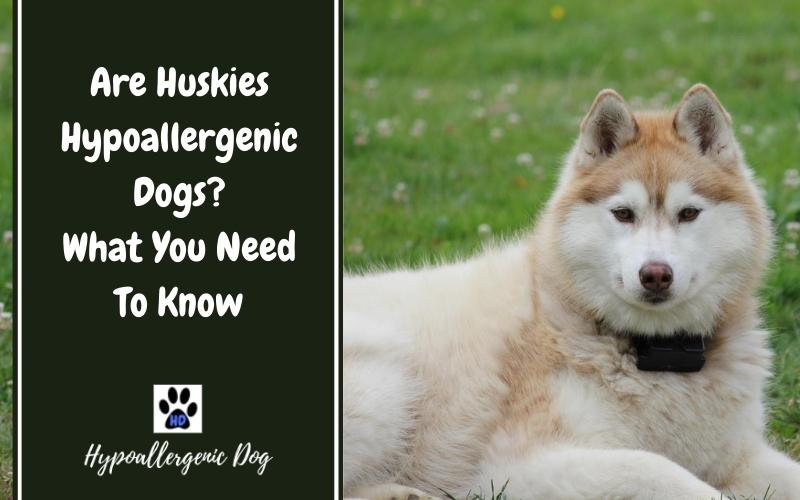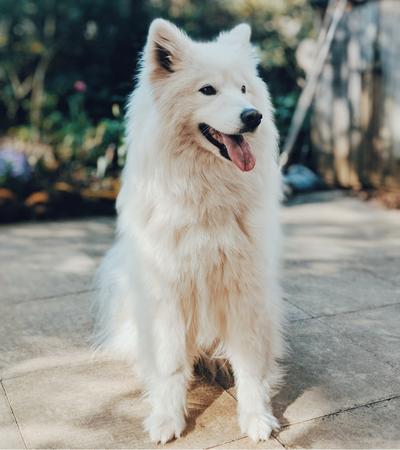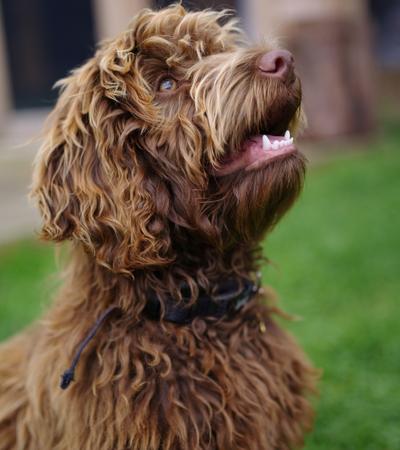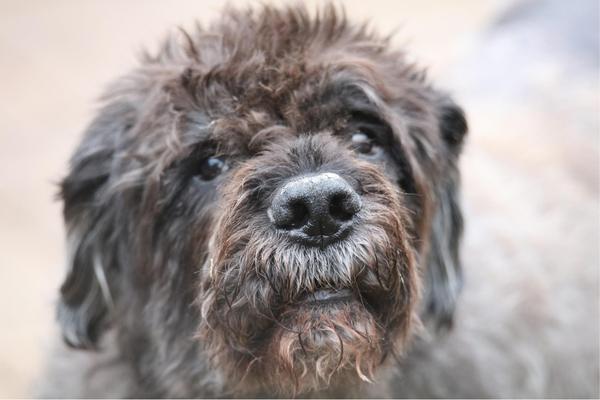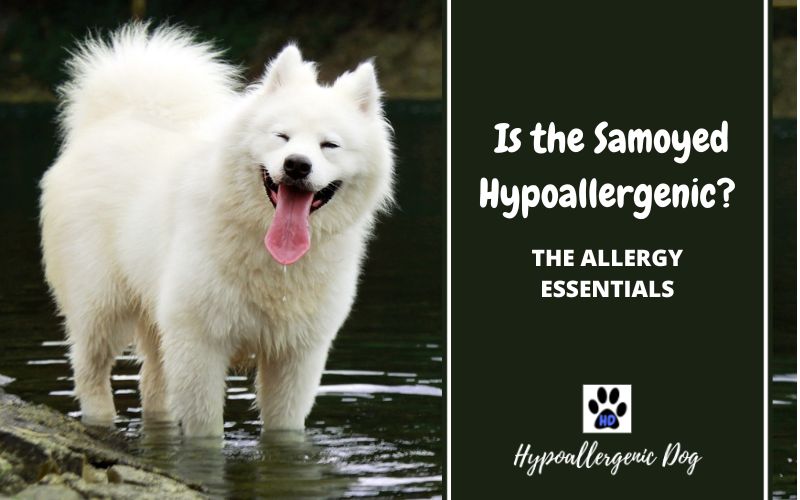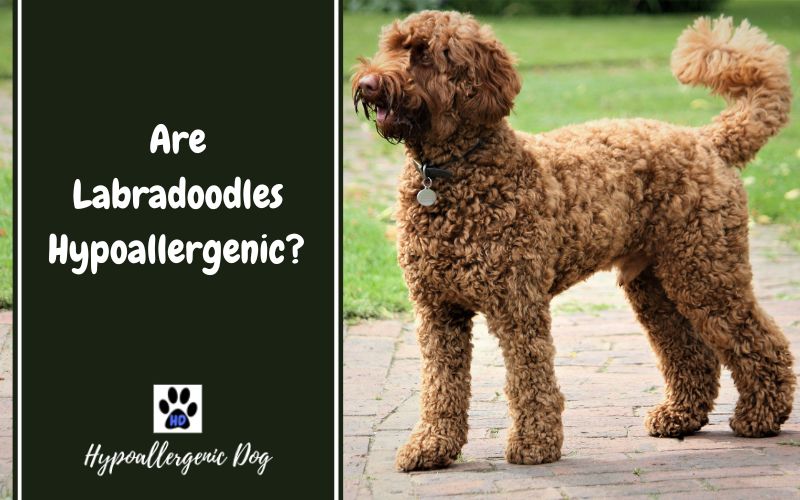Are Huskies Hypoallergenic Dogs?
Are Huskies hypoallergenic dogs? No! Unfortunately, Huskies aren’t considered to be a hypoallergenic dog breed. It’s thanks to their thick double coat that’s ideally suited to their origin in Siberia. This means they shed a great deal, and even more so twice a year. Hence, Huskies are unsuitable for those who suffer from pet allergies.
Husky Quick Facts
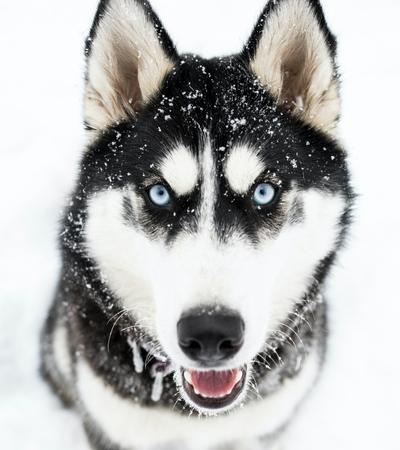
To be honest, there isn’t a truly hypoallergenic dog breed, only those less likely to irritate the symptoms of a dog allergy.
These canines are labeled as hypoallergenic — dogs that shed very little or at all, don’t drool, and sometimes have fur that’s more like human hair than dog fur.
Interested to know more? Read our guide on What Is a Hypoallergenic Dog?
Siberian Huskies have a thick double coat, made up of:
- Soft undercoat — this downy fur provides protection from the cold.
- Long top coat — the thick guard coat that shields the skin and fur.
This type of coat requires frequent grooming to prevent matting and it getting out of control. However, compared to other double-coat dog breeds, a Husky’s coat is fairly easy to take care of and doesn’t need as much brushing.
Do Huskies shed a lot? Most certainly. Huskies shed an awful lot. These dogs not only shed all year round but also blow their coats twice a year — at these times, you can expect fur to fall out in clumps.
To give you an idea, on a scale of one to 10 (with one being the lowest and 10 being the highest shedding), a Husky would be towards the top end of the scale, at around eight.
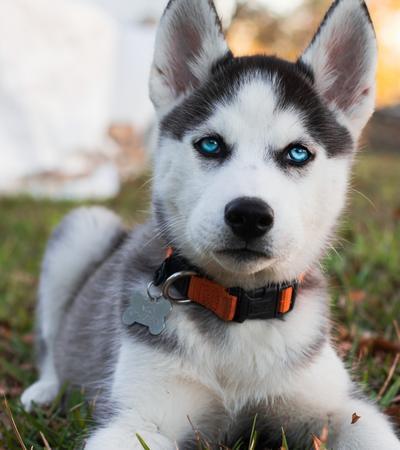
If you already have a Husky, you will no doubt know how much these dogs shed. While you can’t prevent this natural process, here are a few hints and tips to help manage that furry fallout.
1. Groom Your Husky Frequently
Weekly brushing should be enough to keep a Husky’s coat free from mats and tangles during a dog’s normal shedding time. But when they blow their coats twice a year, they may require daily brushing to keep it under control and prevent the fur from taking over your home.
Regular grooming is also important to release any shed fur and dander caught between the top and bottom coat. This applies whether it’s shedding season or any other time.
A Husky should never need to see a professional groomer to have their fur trimmed. Huskies shed their topcoat gradually over the year, and they will have a complete blowout of the undercoat twice a year. A Husky won’t get too hot, they will just naturally shed more during the warmer months.
2. Use a Mild Doggy Shampoo When Bathing
There is no real need to give your Husky a bath more than once every three months. A Husky’s coat doesn’t produce excess oils, so frequent visits to the tub could dry out their skin and increase shedding.
However, when you do bathe them, use a doggy de-shedding shampoo to encourage the dead fur to loosen — particularly when they are seasonally shedding. Huskies will need their fur rinsed thoroughly after washing as shampoo can get trapped in their thick double coat.
3. Feed Your Husky a Healthy-Coat Diet
To keep your Husky’s shedding under control, you should ensure that they’re eating a healthy diet. A balanced diet will help prevent allergies, skin issues as well as other illnesses. Plus, to boost coat condition, offer your pooch fatty acids — omega 3s — by offering fish, like salmon, or try a salmon oil for dogs supplement.
Whether you choose dry, canned, or semi-moist dog food, ensure it contains easy-to-digest protein, avoids preservatives, and is deemed a complete meal — as in, meets your Husky’s daily nutritional requirements. And, make sure fresh water is always accessible — dehydration accelerates shedding.
4. Don’t Skip Walkies
The Husky is a bow-wow with bags of energy, which means they need plenty of walkies time. This helps shedding in two ways. Firstly, being on the move helps release those loose hairs — and they’re falling out in the great outdoors, not around your home. Secondly, exercise keeps your tail-wagger in the best condition, which in turn, keeps shedding manageable.
Bear in mind, that when Huskies are in seasonal shedding mode, you may wish to step-up activity levels to match — think about taking more frequent or lengthier walks.
Siberian Huskies are loving, intelligent, and energetic dogs, but they are, unfortunately, not so great if you suffer from allergies.
However, there are hypoallergenic dogs with similar traits to a Husky that could be the right breed for you. To help you out, here are some of our favorite hypoallergenic Husky alternatives:
Like the Husky, the Samoyed is high-energy and makes a pawsome dog for the family. Although they do shed seasonally, they’re still considered hypoallergenic. Samoyeds have super low dander levels and also low drooling.
They are also one of the few hypoallergenic dogs that look very similar to a Husky, from its fluffy coat to its facial features. Although, they do only come in one color — white, unlike Huskies.
Now, this bow-wow isn’t physically similar to a Husky, but temperament-wise, they’re on par for a family dog. Labradoodles are very intelligent, easy to train, and of course, hypoallergenic. Depending on their genetics, their wool-like coats mean they tend to have great allergy-friendly traits.
Both dogs are categorized as working dogs, although Labradoodles aren’t recognized as such by the AKC. This means that these canines are bred for a particular purpose and possess the mental and physical capacity to carry it out. However, if not given a job they can swiftly become bored and destructive.
Don’t be fooled by their fluffy, shaggy coat — these dogs hold on to their fur, meaning they shed very little. These multi-talented dogs have had a variety of jobs throughout their history, but they’re affectionate and friendly, and create amazing bonds with their human children.
The Bouvier Des Flandres are of a similar height to a Husky, but they do tend to weigh quite a bit more.
Siberpoo/Huskydoodle
Hypoallergenic Husky mix breeds won’t share all the characteristics or appearance traits of a pure Husky, but they won’t shed as much either.
Crossed with a Poodle for the low-shedding element, the Siberpoo is smart, loves to play, and is incredibly active. What’s more, this mix thrives in family-oriented environments and, like the Husky, requires plenty of exercise.
As for their coat, this varies depending on which parent’s genes they take — curly (Poodle), straight (Husky), or wavy (mix of both breeds). Naturally, shedding levels differ — with a curly-haired Siberpoo being the lowest — but all three coat types are far more allergy-friendly compared to the Siberian Husky.
If you do suffer from pet allergies, a Siberian Husky isn’t an ideal choice for you due to their double coat and intense bi-annual shedding.
That said, several hypoallergenic mixes are similar to this talented tail-wagger and share many characteristics and personality traits. Some of our favorites are the Samoyed, Bouvier Des Flandres, or the adorable Labradoodle.
So, in conclusion, are Huskies hypoallergenic? No, they aren’t. But they are amazing family dogs that are bursting with energy and love.
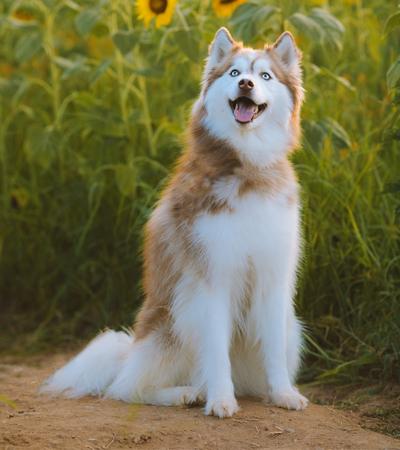
Hypoallergenic Huskies FAQs
Are Huskies Non Shedding?
Unfortunately, Huskies are not non-shedding — in fact, they shed a lot. Siberian Huskies have a thick double coat and shed their long topcoat all year round. Twice a year Huskies lose their full undercoat. The soft and fluffy fur can fall in large clumps and will shed intensively over a 2-3 week period.
Are Samoyed Huskies Hypoallergenic?
Is the Samoyed Husky mix hypoallergenic? Well, yes and no. The Samusky does have a dense double coat but only sheds its undercoat twice a year. A pure Husky will shed all year long and blow their undercoat twice a year. So, it’s fair to say the Samusky is a better choice for people who suffer from a dog allergy.
How To Stop Huskies From Shedding?
There are many ways you can manage your Husky’s shedding from bathing, regular grooming, exercise, and diet. For further information, check out our section on How to Stop Huskies Shedding.
Are Siberian Huskies Hypoallergenic?
Think about their thick double coat, and you will have your answer — no. Husky’s have a soft and downy, fluffy undercoat and a topcoat consisting of long, thick guard hairs. To maintain a Husky’s beautiful coat, owners will need to brush them thoroughly at least once a week.
Do Huskies Shed Dander?
Yes. The Husky has a thick double coat and they shed all year round. Part of this shedding fur will also include dander.

